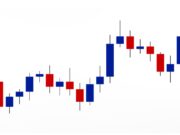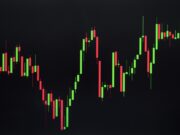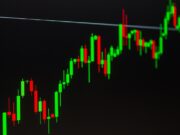President Trump’s announcement of a 50% tariff on copper imports beginning August 1 has sent shockwaves through global commodity markets, creating the most dramatic price disruption in the copper market since 1989. The policy has effectively split the global copper market in two, with U.S. prices surging while international markets remain pressured, forcing investors to navigate an unprecedented arbitrage opportunity fraught with both promise and peril.
Market Reaction: Historic Volatility Unleashed
The immediate market response to Trump’s copper tariff announcement demonstrates the policy’s disruptive power. U.S. Comex futures jumped 2.65% on Thursday following the announcement, while Wednesday’s session delivered a staggering 13% surge – the best single-day performance since 1989.
This explosive price action contrasts sharply with international markets, where three-month benchmark copper futures on the London Metal Exchange declined over two days before recovering modestly. The widening premium between U.S. and global copper prices reflects a fundamental market distortion that’s creating both opportunities and risks for investors.
The price divergence stems from immediate behavioral changes among U.S. buyers, who are scrambling to front-load imports before tariffs take effect. This rush to beat the deadline has artificially inflated domestic prices while leaving international markets relatively stable.
The Supply Reality: America’s Copper Dependence
Understanding the investment implications requires grasping the scale of America’s copper import dependence. Nearly half of the copper consumed in the United States comes from foreign sources, creating the vulnerability that Trump’s policy aims to address.
Macquarie analysts reveal the scope of recent stockpiling behavior, estimating that copper imports totaled 881 metric tons in the first half of the year compared to an underlying requirement of around 441 metric tons. This massive discrepancy implies a 440,000-ton excess inventory build, comprised of 107,000 tons in visible Comex stocks and 333,000 tons in unreported inventory.
The United States’ underlying import demand of approximately 74,000 tons monthly, combined with this inventory overhang, suggests the country has roughly nine months to work down excess stocks. This timeline provides crucial context for investors evaluating near-term price movements.
Former U.S. Secretary of Commerce Carlos Miguel Gutierrez highlighted the strategic challenge: America’s reliance on copper imports represents a “vulnerability, but [the U.S. doesn’t] have the capacity right now to offset imports.” He anticipates both copper shortages and price increases as companies begin investing in production capacity.
The Long-Term Infrastructure Challenge
The timeline for addressing America’s copper dependence reveals why this tariff policy creates such complex investment dynamics. Sabrin Chowdhury, head of commodities research at BMI, estimates the U.S. would need 20 to 30 years to build significant copper production capacity, noting that “it takes 10 years just to explore for copper.”
This extended development timeline means the tariff’s protective benefits for domestic producers will persist far longer than typical trade policy measures. For investors, this suggests sustained structural changes in U.S. copper markets rather than temporary disruption.
The strategic importance of copper cannot be overstated. Trump noted in his Truth Social announcement that copper is the “second most used material by the Department of Defense.” Beyond defense applications, copper serves as a critical input in semiconductors, aircraft, data centers, lithium-ion batteries, and electric vehicles – all growth sectors driving increasing demand.
Wall Street’s Split Verdict: Caution vs. Opportunity
Investment professionals are sharply divided on how to approach the copper market disruption, with respected managers offering contrasting strategies based on different risk assessments.
The Cautious Approach: Volatility Concerns
Alonso Munoz, chief investment officer and founding partner at Hamilton Capital Partners, advocates staying clear of copper investments in the short term due to “potential for significant volatility.”
His concern centers on policy uncertainty: “The price of copper spiked after Trump spoke about the tariffs to his cabinet, and that gives us some caution that if the administration changes their mind, that could instantly cause prices to retreat.”
Munoz expects U.S. prices to remain elevated near-term, benefiting domestic producers through improved margins. However, he warns this will ultimately translate to higher costs for products containing copper, including data center wiring, power grid infrastructure, and electric vehicle motors.
Looking ahead, Munoz projects copper prices settling around $4.90 to $5 per ton – representing a 13% decline from current levels – despite strong demand from the green energy transition. He cautions that “short-term price spikes of 10-20% doesn’t necessarily mean it would continue,” warning that policy changes or supply-demand rebalancing could cause significant price retreats.
The Bullish Case: Undervalued Strategic Asset
Will McDonough, CEO of merchant bank Corestone Capital, presents a contrasting investment thesis, viewing copper as an undervalued asset given its expanding use cases.
“People underappreciate the volume of copper necessary for intermittent battery supplies, like solar and wind, electric vehicles or even the adoption of artificial intelligence and data centers,” McDonough argues.
His investment approach involves direct positions in copper futures, reflecting confidence in long-term demand fundamentals. McDonough attributes Trump’s copper focus to recognition that “China and unfriendly foreign powers have hoarded a lot of copper supply,” with current price jumps reflecting market awareness that “supply is concentrated.”
China’s dominance in copper markets supports this view. The country produced 1,800 metric tons of copper in 2024 while becoming the top importer of copper ore and unrefined copper, accounting for roughly 60% of total imports in 2023 compared to just 17% in 2013.
Despite his bullish outlook, McDonough acknowledges current prices may reflect some “overreaction to the tariffs.” He expects short-term corrections to “high fours or low fives” but maintains that buying copper around $5 per pound would represent “good value” over a multi-year horizon.
Market Structure and Arbitrage Dynamics
Citi Investment Research provides additional perspective on market structure implications. Their analysts expect copper prices outside the U.S. to decline to $8,800 per ton within three months, while projecting the Comex-LME arbitrage will be heavily discounted at 50%.
This discount expectation reflects both the significant U.S. inventory build and the likelihood that major copper exporters will negotiate partial exemptions at reduced tariff rates. For sophisticated investors, these arbitrage dynamics present potential opportunities, though they require careful navigation of both market and political risks.
Investment Strategy Considerations
The copper tariff situation creates several distinct investment approaches, each suited to different risk tolerances and time horizons:
Domestic Producer Exposure: U.S. copper mining companies stand to benefit from sustained price premiums and import protection. However, investors must evaluate production capacity constraints and expansion timelines.
Supply Chain Impact Assessment: Companies heavily reliant on copper inputs face margin pressure from higher material costs. This creates both risks for copper-intensive manufacturers and opportunities for companies with effective hedging strategies.
International Market Positioning: The price divergence between U.S. and global markets may create opportunities in international copper investments, particularly if U.S. inventory overhangs pressure domestic prices while global demand remains steady.
Long-Term Infrastructure Plays: The 20-30 year timeline for developing U.S. copper production capacity suggests sustained investment opportunities in domestic mining infrastructure and exploration companies.
Risk Factors and Uncertainties
Several key uncertainties complicate investment decision-making in the current environment:
Policy Durability: The tariff policy’s longevity depends on political stability and effectiveness in achieving strategic objectives. Policy reversals could quickly eliminate price premiums.
Inventory Dynamics: The substantial inventory overhang in U.S. markets could pressure prices once front-loading effects subside, particularly if demand growth disappoints.
International Retaliation: Trade partner responses could affect global copper flows and pricing relationships in unpredictable ways.
Demand Evolution: Green energy transition timelines and artificial intelligence infrastructure buildouts will significantly influence long-term copper demand growth.
The copper tariff represents a fundamental shift in U.S. trade policy toward strategic materials, creating both unprecedented opportunities and substantial risks for investors. Success will likely depend on careful analysis of inventory cycles, policy durability, and demand fundamentals rather than simply betting on continued price premiums.
As this market disruption unfolds, investors face the challenge of distinguishing between temporary arbitrage opportunities and structural changes that will reshape copper markets for decades to come.











